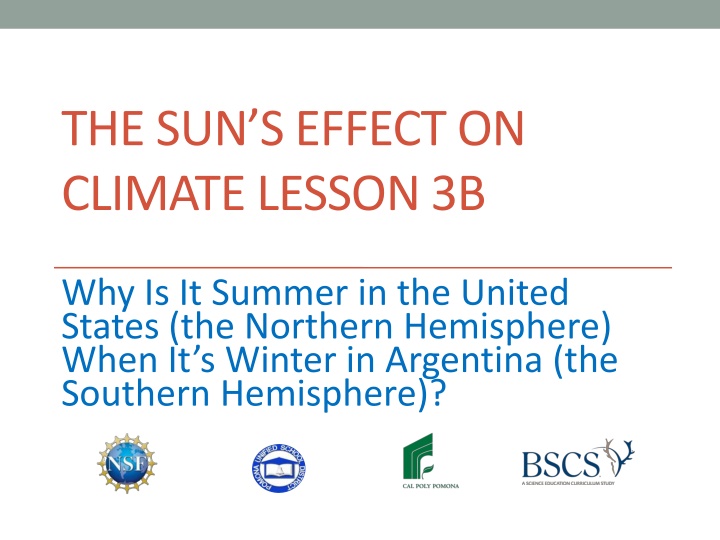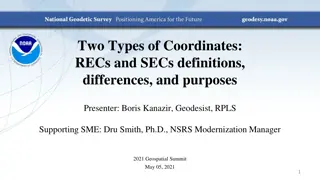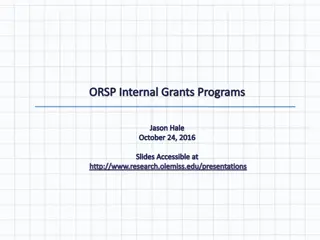
Seasonal Differences Between the United States and Argentina
Explore the reasons behind why it is summer in the United States while it is winter in Argentina, focusing on Earth's orbit around the Sun and the impact of axial tilt. Investigate the distribution of sunlight, seasonal changes, and the relationship between hemispheres through interactive experiments and observations.
Uploaded on | 0 Views
Download Presentation

Please find below an Image/Link to download the presentation.
The content on the website is provided AS IS for your information and personal use only. It may not be sold, licensed, or shared on other websites without obtaining consent from the author. If you encounter any issues during the download, it is possible that the publisher has removed the file from their server.
You are allowed to download the files provided on this website for personal or commercial use, subject to the condition that they are used lawfully. All files are the property of their respective owners.
The content on the website is provided AS IS for your information and personal use only. It may not be sold, licensed, or shared on other websites without obtaining consent from the author.
E N D
Presentation Transcript
THE SUNS EFFECT ON CLIMATE LESSON 3B Why Is It Summer in the United States (the Northern Hemisphere) When It s Winter in Argentina (the Southern Hemisphere)?
Your Initial Ideas about Seasons Why do you think we have summer in the United States when people in places like Argentina are having winter? What initial ideas did you write down and draw in your science notebook yesterday to answer our focus question? Do you have any new ideas to add to our class chart? Any questions?
Lesson Focus Question Today we ll continue exploring our focus question from last time: Why is it summer in the United States (the Northern Hemisphere) when it s winter in Argentina (the Southern Hemisphere)?
Earths Orbit around the Sun Look at the projected diagram of Earth s orbit around the Sun. What does this diagram tell us about the tilt of Earth on its axis during its orbit around the Sun? What do you notice about the direction the axis is pointing?
Investigating Earths Orbit and Seasons 1. As you simulate Earth s orbit around the Sun, make sure to keep the axis of your model pointing toward the North Star and keep the base of your stand parallel to the ground. 2. At each of the four positions in Earth s orbit, record on your handouts the season each hemisphere is experiencing: Which season is the Northern Hemisphere experiencing at this position? Which season is the Southern Hemisphere experiencing at this position?
Earths Orbit and Seasons: Your Ideas What part of Earth received more sunlight in position 1? What season would it be in the Northern Hemisphere when Earth is in that position? What season would it be in the Southern Hemisphere? As Earth moves between positions 1 and 2, what months of the year would it be?
Earths Orbit and Seasons: Your Ideas What part of Earth received more sunlight in position 3? What season would it be in the Northern Hemisphere when Earth is in that position? What season would it be in the Southern Hemisphere? As Earth moves between positions 3 and 4, what months of the year would it be?
Earths Orbits and Seasons: Your Ideas What seasons do positions 2 and 4 represent? How would you describe Earth s tilt in these positions relative to the Sun? In these positions, do you think both hemispheres would receive the same amount of sunlight or different amounts? Why?
Is Earth Closer to the Sun in the Summer? Based on our Earth-Sun model, how would you answer these questions? Is Earth closer to the Sun when it s summer in the United States? Why or why not? Is Earth closer to the Sun when it s summer in Argentina? Why or why not? If Earth isn t closer to the Sun in the summer, why do we have warmer temperatures?
Lets Summarize! 1. Earth always tilts in the same direction toward the North Star. 2. Earth s Northern Hemisphere points toward the Sun at certain times and away from the Sun at other times. 3. When the Northern Hemisphere points toward the Sun, the Southern Hemisphere points away from the Sun. 4. When Earth is in position 1, it s summer in the Northern Hemisphere and winter in the Southern Hemisphere. 5. When Earth is in position 3, it s summer in the Southern Hemisphere and winter in the Northern Hemisphere.
Our Focus Question Why is it summer in the United States (the Northern Hemisphere) when it s winter in Argentina (the Southern Hemisphere)? Do you still agree with your initial ideas? What ideas would you like to add or change? Write a new answer to the focus question in your notebook. Include evidence from the Earth-Sun model.
Next Time What do Earth s consistent tilt and the angle of sunlight at different latitudes have to do with the amount of light energy the Northern and Southern Hemispheres receive at different times of the year? That s what we ll investigate tomorrow!




















